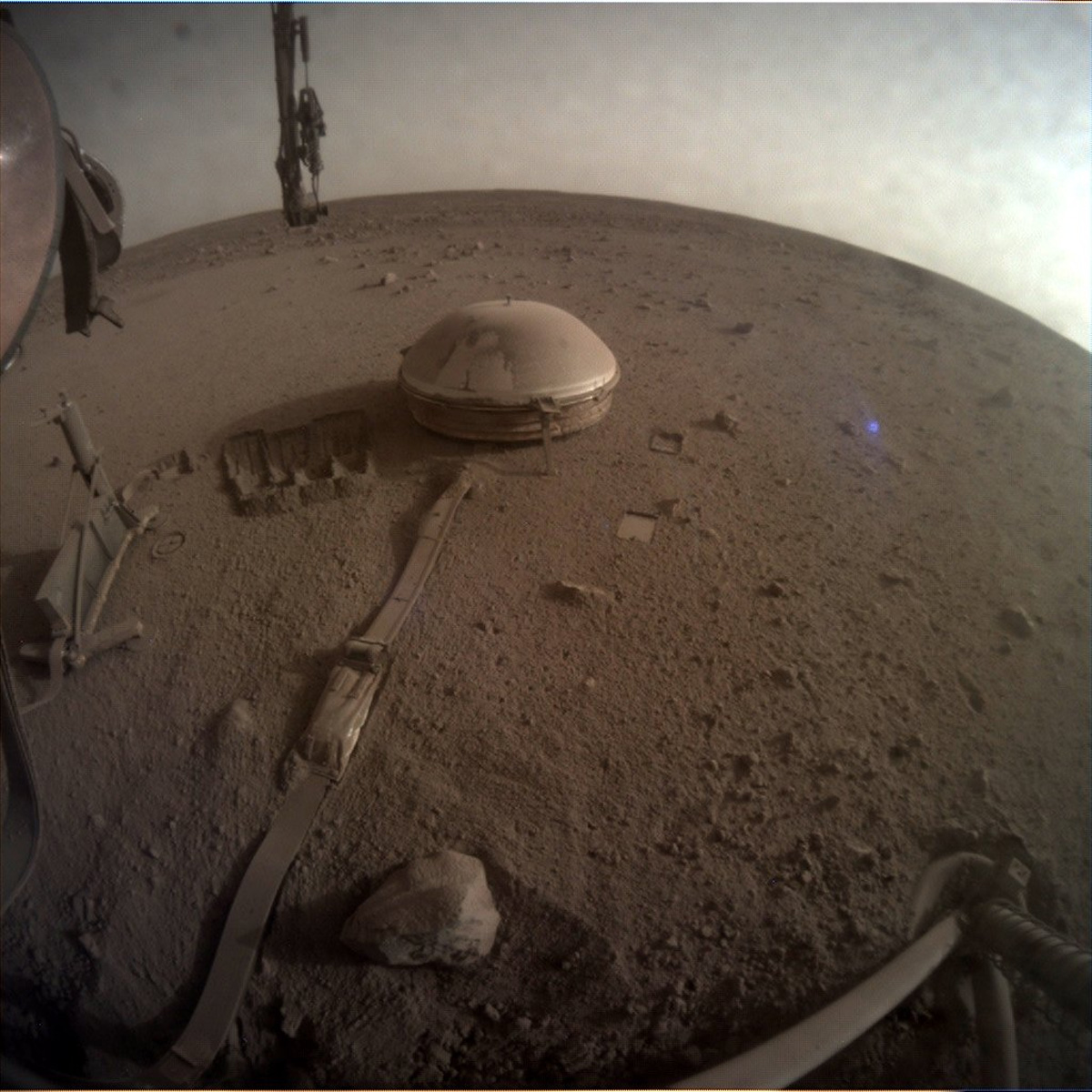
[ad_1]
A NASA lander that is fighting for survival on Mars has gone silent.
NASA lost contact with its Mars InSight lander (opens in new tab) on Sunday (Dec. 18) after the spacecraft failed to respond to communications from its control team. InSight, which has been studying quakes on Mars (opens in new tab) since 2018, is suffering from power issues due to dust buildup on its solar arrays.
“The lander’s power has been declining for months, as expected, and it’s assumed InSight may have reached its end of operations,” NASA wrote in an update (opens in new tab) Monday (Dec. 19). “It’s unknown what prompted the change in its energy; the last time the mission contacted the spacecraft was on Dec. 15, 2022.”
Related: NASA’s InSight Mars lander: 10 surprising facts
NASA reported the lost contact with InSight one day after sharing what might be the last photo from the Mars lander, a view that showed the Martian horizon with the probe’s seismometer, robotic arm and other gear in view. NASA’s Jet Propulsion Laboratory in Pasadena, California oversees the mission.
“My power’s really low, so this may be the last image I can send,” the InSight lander team wrote on Twitter (opens in new tab) Monday while sharing the image. “Don’t worry about me, though: my time here has been both productive and serene.”

NASA launched the InSight lander to Mars in May 2018 on a two-year mission to study the interior of the Red Planet with a seismometer and heat probe. While the heat probe, which was supposed to drill a few meters beneath the Martian surface, never reached its target depth, the seismometer wowed scientists with over 1,300 detections of marsquakes. The $814 million mission was ultimately extended until December 2022, and last week scientists announced that InSight had detected its strongest marsquake yet.
While NASA engineers work to restore communications with InSight, its looming end was an open secret. In May, NASA announced that the end was coming for InSight due to the dwindling amount of power its dust-caked solar arrays were generating at the time. As of November, the spacecraft was generating just 20% of the power it had when it landed on Mars in November 2018.
“The mission will continue to try and contact InSight,” NASA added in its Monday update.
Email Tariq Malik at [email protected] or follow him @tariqjmalik (opens in new tab). Follow us @Spacedotcom (opens in new tab), Facebook (opens in new tab) and Instagram (opens in new tab).
[ad_2]